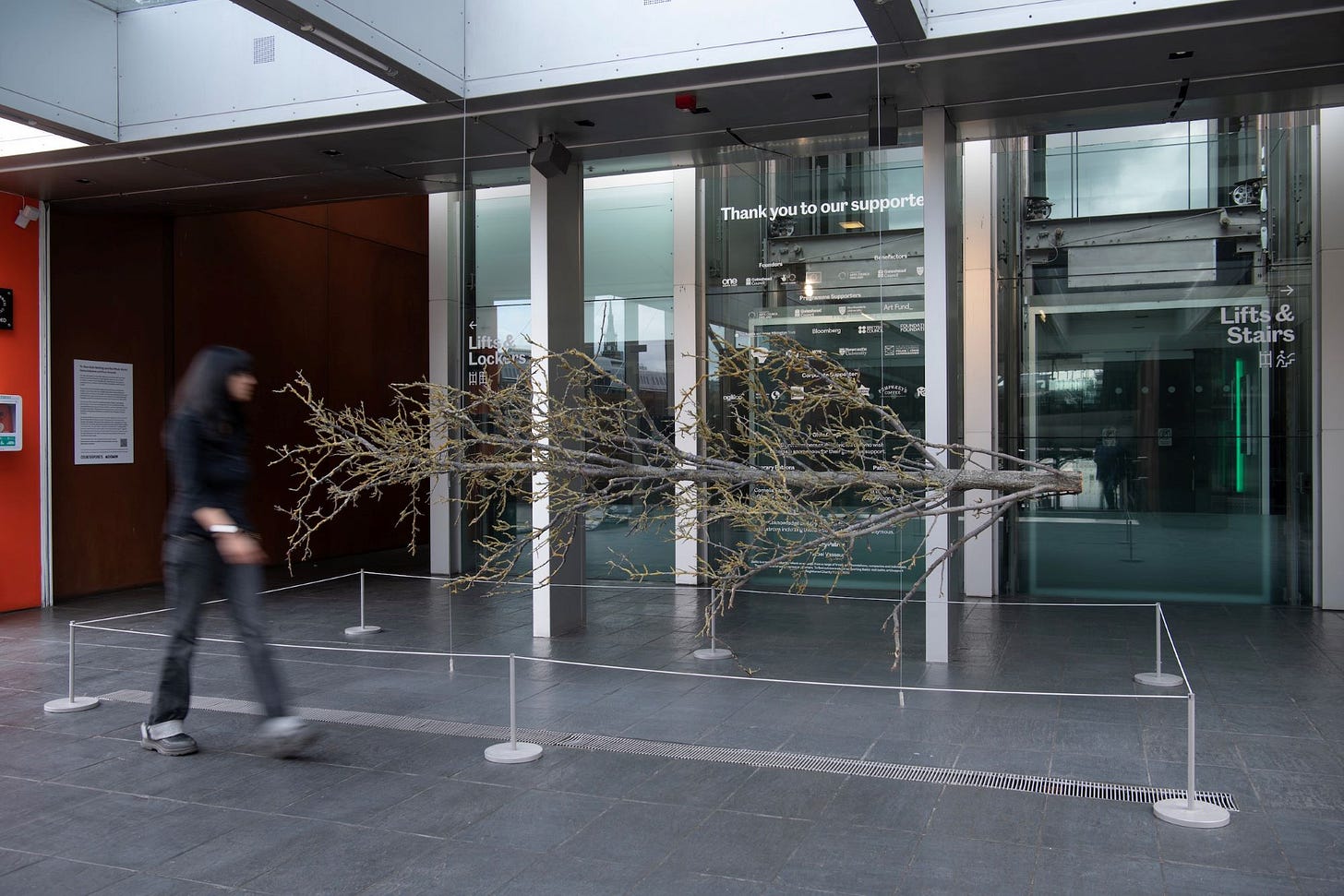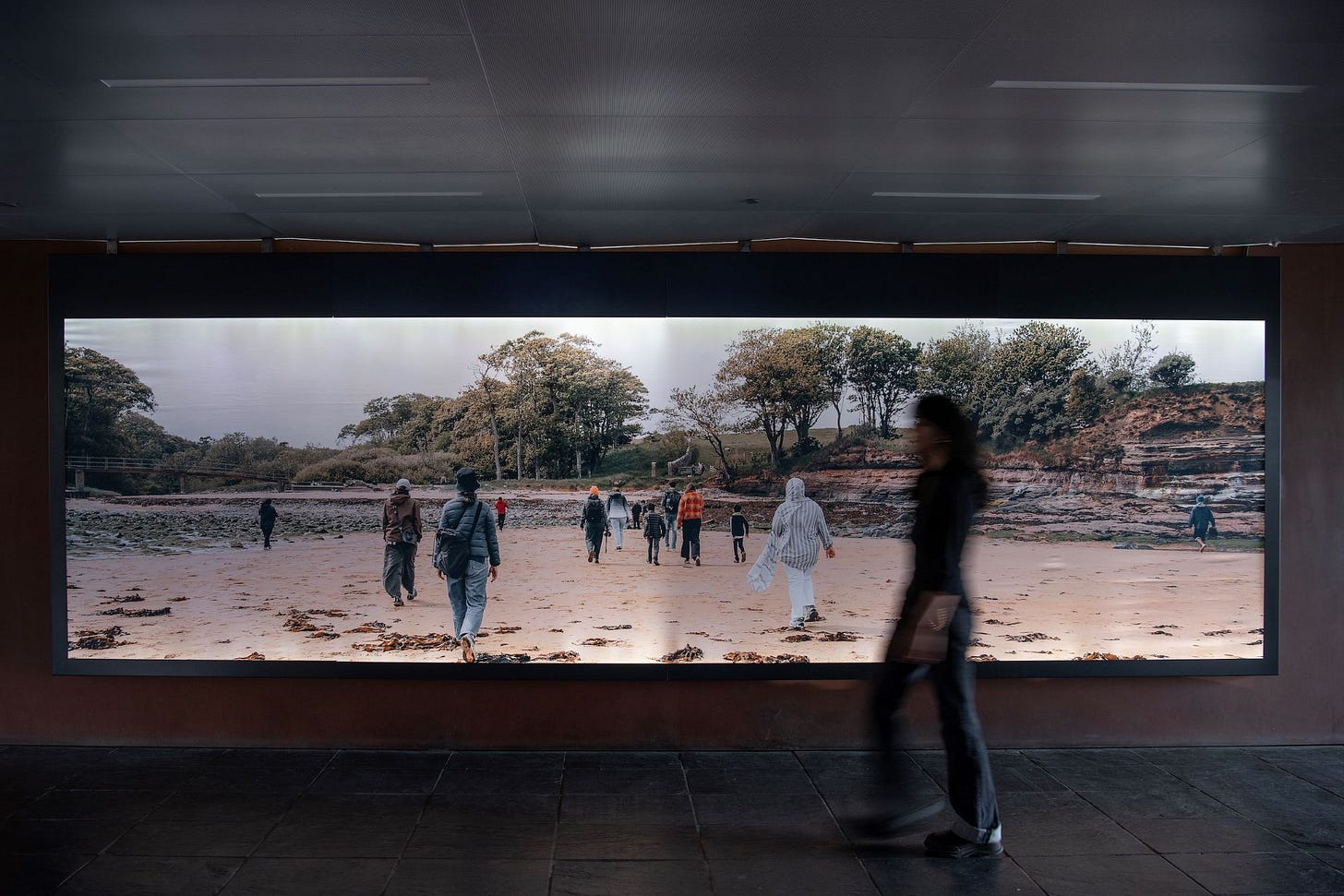Baltic exhibition gets to the root of the matter
The world seen through an ‘eco-social’ lens
Birds’ nests, 200-year-old tree roots, Moomins (nominally, at least) and that’s not all. The word ‘exhibition’ is rarely adequate for describing the art of Henna Asikainen.
This latest is called To Own Both Nothing and the Whole World – and that is a line uttered by Snufkin, a free-spirited character in the Moomin books written by Finnish author Tove Jansson.
This, at Baltic, is a Henna- and Moomin-inspired attraction in which nature has played a large part.
For the Moomin stories, this is a special year. The first book, The Moomins and the Great Flood, telling of the displaced Moomins’ quest to find a safe haven, was written during the Second World War and published in 1945.
To mark the 80th anniversary, Moomin Characters, which manages the Moomin legacy (Jansson died in 2001), commissioned a national organisation called Counterpoints Arts, which coordinates Refugee Week UK.
Counterpoints Arts then commissioned four public artworks inspired by that first Moomin story – one for London, one for Gloucester, one for Bradford, current UK City of Culture, and one for Gateshead, at Baltic.
Henna, like Tove Jansson, is Finnish, although she has lived in Newcastle for a long time, studying and working.
For this project she was introduced to Roua Horanieh, an architect and storyteller based in London but originally from Syria, and they worked on it together, sharing ideas about how the Baltic material should be gathered and presented.
Henna’s artistic practice fits so neatly with the Counterpoints Arts philosophy that she might have written it herself.
Human displacement, whether by war or climate change, has long inspired her.
Artist and activist, rather like Tove Jansson, she works a lot with refugees, immigrants and asylum seekers, initiating projects which involve them in exploring their new surroundings.
She leads country walks, uniting people who often don’t share a language in positive shared experiences. The works are both an end and a means to an end, generating material for whatever exhibition wraps it all up.
The exhibition at Baltic permeates the building.
Out on Baltic Square are the roots of two mighty oaks felled in a storm at Howick Hall Gardens & Arboretum, the Northumberland ancestral home of Earl Grey.
The oaks were planted as part of the British war effort in Napoleonic times (clearly it was envisaged we’d be fighting the French for centuries to come) and fell in a storm.
Henna, who had been looking everywhere for roots, was delighted when they were made available to her.
“We did a lot of work cleaning them because the head woodman from Howick said about one and a half tonnes of soil would have to be taken away before we could move them.
“They are like fleeting majestic guests because they are going to go away quite soon.”
Health and safety issues mean they are at Baltic just for Refugee Week (June 16-22) but according to Roua they will later return to be part of a garden being planned for Baltic Square (watch this space for further news on that).
“The roots are the origins, the tree is the transition and the nests are the new beginnings,” explains Roua.
“That’s how we used the whole building to tell the story of migration.”
Henna led a walk at Howick Hall and a panoramic shot of the walkers on the beach is displayed in the Baltic entrance light box.
Equally arresting is the sapling displayed horizontally in front of the lifts. It fell near Henna’s home during a storm and she recruited volunteers to carry it to Baltic in a kind of stately procession symbolic of migration.
Noises recorded along the way, including comments from passers-by, contributed to an exhibition soundscape which also features a dawn chorus from Howick Hall.
Proceed to the fifth floor, progressing metaphorically from roots to upper branches, and you will find more examples of the outdoors brought inside.
There’s the array of delicate nests, some the work of migratory birds and some of human migrants, and on the floor a ring of roughly woven branches sprinkled with the dried blossoms of the Taihaku cherry tree.
The story goes that the species had become extinct in its native Japan and was saved because of the discovery of a single tree in a Sussex garden (do check out the wonderful story of Collingwood ‘Cherry’ Ingram).
Henna took a group to The Alnwick Garden to experience its abundant collection of Taihaku cherries during their spring blossoming.
Metaphors of home, displacement and belonging abound, in the survival of the cherry tree, the beautifully constructed nests and the participation of those learning about a new country and culture.
Look closely at that ring of branches and you will see rows of bird spikes tangled up in them, a reminder, says Henna, of the many people who have to make their homes in hostile environments.
Henna and Roua led us round with participants Man Ouyang, from China, who is studying philosophy at Durham University, and Korey Kegan Bonnett, an asylum seeker from Trinidad and Tobago.
“It was an amazing experience for us,” enthused Korey, remembering Alnwick’s cherry blossom. “It was a blanket of trees, like a fantasy existing in and out of time.
“We toured the garden, learned a lot about the different landscapes there and the story of the cherry tree.
“It’s been an amazing journey for us. Just to know, as a migrant myself, that this tree has experienced something similar to me… it’s a symbol now for migrants everywhere, as I see it.”
Man became involved after hearing about Henna’s tree procession.
“I liked the idea of thinking of where we come from and where we are going. It just resonated with me, the idea that I can carry my origins all the way to a very different country.
“I have learned about a different culture but also how to look at my origins in a different way. It has been a really interesting experience for me.”
For Henna, as ever, the process of assembling the material has been as important as the finished result.
Her eyes shine as she recalls how she and Roua got to work on the giant roots, cleaning away the soil, and the involvement of so many different people. She calls it looking at the world through “an eco-social lens”.
Korey, whose nest on the fifth floor recalls his father, a retired police officer, who in the fishing village where he grew up was “the source of my protection”, wants to emphasise the importance of the project.
“I say different roots, shared dreams,” he tells us before we head off.
“In this project we have had artists from different parts of the world come together to share this magnificent dream with people from different communities and cultures.
“We all come from different places but we share the dream of a better life and I think this project exemplifies that.”
See To Own Both Nothing and the Whole World at Baltic until July 6 – but hurry to Baltic Square if you want to see those mighty roots before they embark on another journey.
And while no actual Moomins feature in the exhibition, there’s merchandise aplenty in the Baltic shop.










